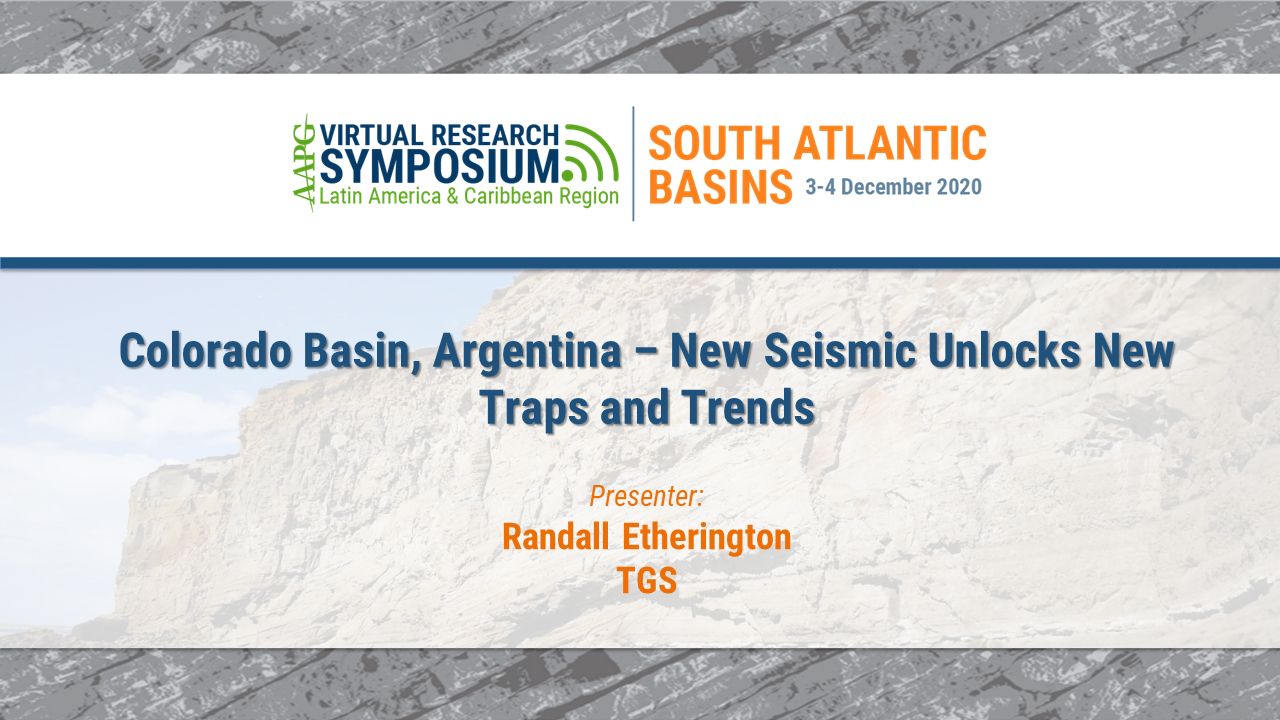
Summary
Authors: Randall Etherington (presenter), Eric Newman, TGS
Onshore, compressional structures are evident in the pre-rift rocks of the Sierras Australes. Similar compressional structures of the Sierras Australes can be traced with seismic data into the offshore. The individual rift basins along this margin initially formed from intracratonic rifting within the paleo-continent of Gondwana during the middle Mesozoic. The Colorado Basin that formed following north-west to south-east extension prior to the east/west extension that resulted in the opening of the South Atlantic can be clearly seen superimposed on the predominantly compressional pre-rift architecture. As evidenced by the Colorado Basin 2D survey, many structures have been eroded at the break-up unconformity level but the forelimbs and backlimbs of the folds are still present. This truncated stratigraphic relationship as well as the uneroded anticlines may act as hydrocarbon traps sourced by Permian, Carboniferous, and Early Cretaceous syn-rift source rocks. Exploration activities of the offshore Colorado Basin started in the 1970s. Only 26 exploration wells have been drilled on the northern margin (north of 47°S), with none in water depths greater than 100 meters and all located at least 15 km inboard from the continental shelf edge. These wells were drilled, mostly by major oil companies, without any commercial success. However, four wells with hydrocarbon shows confirmed syn-rift and Permian to Jurassic marine and lacustrine source. The pre-rift Structure Play of Paleozoic through Lower Cretaceous rocks is the primary play type of the Colorado Basin. Petroleum Systems include oil-generating source rocks proven in Permian - Jurassic pre-rift and Cretaceous syn-rift sediments. Reservoir rocks include pre-rift Permian-Jurassic, Cretaceous and Cenozoic sandstones.
Bio:
Randall Etherington, TGS-NOPEC Geophysical Company
Randall earned a bachelor’s degree in Engineering from Utah State University, and a MSc in Geology from Brigham Young University.
His more than 40 years of experience in the industry include several positions in companies as ExxonMobil, Chevron, Shell, Phillips, Devon, YPF-Regsol, Pennzoil, Cobalt, Murphy; Maersk, among others. Currently, he is Exploration Advisor at TGS-NOPEC Geophysical Company, where is responsible for geophysical interpretation and basin analysis.
Randall is a member of AAPG and SEG.
Please log in to view or purchase the video presentation